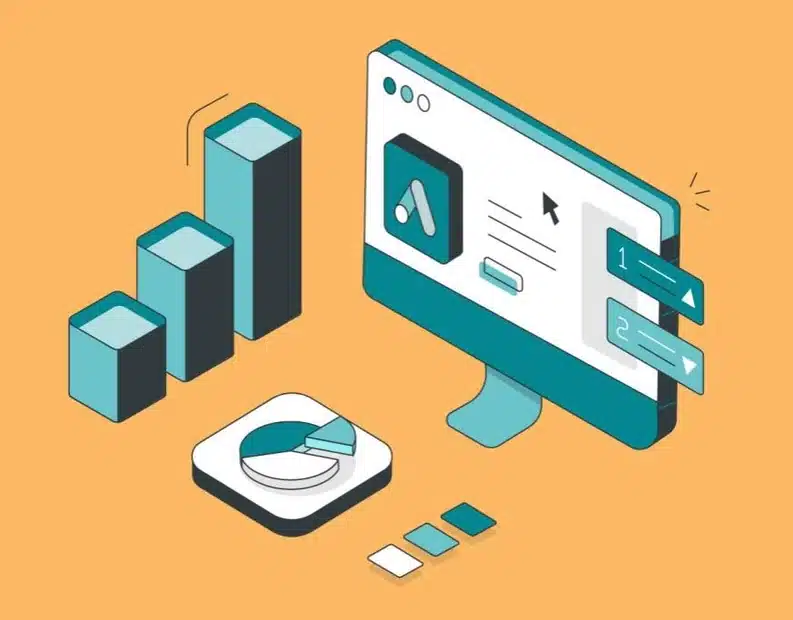Once you start using Google Ads to market your business, you will soon encounter something called attribution models. Google currently offers six different types of attribution models. If you are unfamiliar with these, it can seem like a minefield because selecting the wrong one can leave you with inaccurate data that might negatively affect your future online marketing campaigns. Below we explain what these models are, why they are important, and how to choose the best attribution model for Google Ads.
What Are Attribution Models For Google Ads?
Google describes attribution models as “the rule, or set of rules, that determines how credit for sales and conversions is assigned to touch points in conversion paths”.
If that sounds like Greek to you, don’t worry – it’s not really that difficult to grasp. In laymen’s terms, it simply means that these models help you to get a clearer picture of why and how a specific visitor was converted into a buyer. They tell your analytics which keyword or channel should be given credit for the conversion or sale.
Why Attribution Models For Google Ads are important
So why is any of this important? Because to convert a lead into a customer on average takes between 7 and 13 ‘touches’ or interactions between a prospective client and your business. These touches could include a number of different channels including paid search, display ads, social media ads, email marketing or organic search.
Simply attributing the sale to the last touch point or interaction would be wrong. Without the preceding contact points, nothing might have happened.
How The Six Google Ads Attribution Models Work And How To Choose The Right One
The Last-Click Model
In Google Ads, this is the default – so if you don’t change any settings it’s the one that will be used. With the last-click model, all the credit for the conversion or sale goes to the ad the visitor clicked on last.
So even if that visitor has seen 10 other ads (or interacted with other channels) run by your business in the same month, but the last ad on which he or she clicked was your Google Shopping Ad, that ad gets full credit for the conversion or sale.
It’s not difficult to see how this could give a distorted view of a long process of interaction of which the shopping ad was only the final step.
The First-Click Model
This model gives full credit to the keyword or channel that initially drove traffic to your website. Let’s say you run a standard Google ad targeting a common industry keyword and generate a click. However, the user isn’t convinced enough to become a buyer. After that, you run a display remarketing ad and get a second click. And this time it works and they convert.
If you use the First-Click model, full credit will go to the ad this user engaged with – even though it failed to convert. This is why we only recommend this model for testing the success of top-of-the-funnel engagement and brand awareness.
The Linear Model
This model gives equal credits to all interactions a specific user takes before he or she converts. If they fail to click on an ad, no credit is assigned. The linear model is, therefore, better than its first- or last-click counterparts in the sense that all contributing channels are given credit.
Since no distinction is made between a stronger and weaker contribution, however, it might not always be the best choice. Where it will be a good choice is when you intend to run complex marketing campaigns which could involve multiple touch points across multiple campaigns, and you want to give all equal credit for getting the conversion.
The Time Decay Model
In this case, the biggest credit is given to actions that happened nearest to the final conversion. If a user, for example, had 13 touches before they converted, but these were spread out over a period of weeks, the final few touches are given the biggest credit.
This works very well for long, complex campaigns. Firms that need detailed info on a wide list of products and services will also find it useful. However, it will probably be overkill for a simple campaign.
The Position-Based Model
This model attributes 40% of the conversion credit to the first touch, 40% to the last touch, and the rest to the remaining clicks in between. Contrary to linear modelling, it gives more emphasis to the first and last keywords.
This option gives your firm insight into:
Which campaign first drew the visitor’s attention – brand campaigns like display still get credit
Which one was responsible for closing the deal – bottom of funnel campaigns also get credit
The keywords and clicks in between that kept them interested enough to eventually convert
A position-based attribution model can help a firm to find the perfect balance between creating awareness and closing a deal.
The Data-Driven Model
This model employs Google’s machine learning technology to assign credit to the campaigns that played the most important role in the conversion process. With this data-driven approach, the company makes it possible to remove a lot of the guesswork from choosing the right attribution model.
Google’s test data shows that there are many benefits to using the data-driven model. To qualify, however, you will need at least 3000 clicks and 300 conversions per month and you must be able to sustain this for at least 30 consecutive days. That is why we only recommend it if you are spending between $2,000 and $5,000 or more on Google Ads every month.
The Data-Driven attribution model however is the ultimate and preferred attribution model for campaigns.
If you are wondering what attribution model you are running on your Google Ad campaigns, please feel free to reach out and talk to the team at Unbound. We offer a Google Ads Audit which can help give you some ideas on how to improve your Google Ads campaign performance and what attribution model you are using currently.






